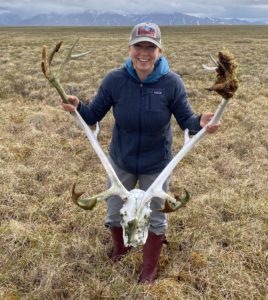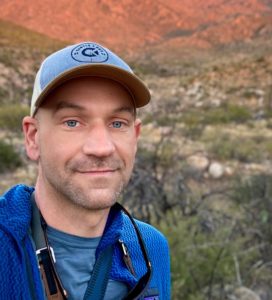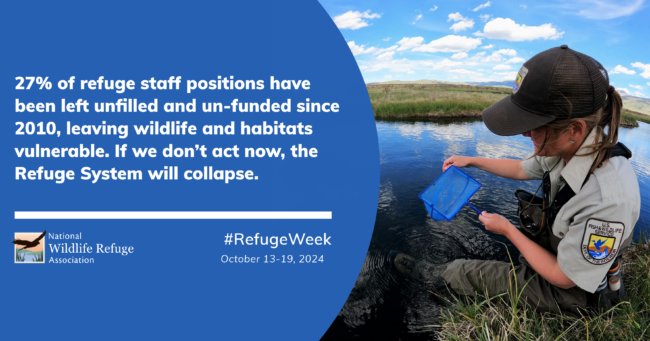By Poppy Benson, Vice President for Outreach
How did we fulfill our mission of supporting the Alaska National Wildlife Refuges through 1) direct support both financial and with volunteer time, 2) outreach and education and 3) advocacy? Our outreach and education programs were better than ever but budget uncertainty and staff loss made it difficult to develop volunteer projects. Our advocacy efforts faced very stormy weather.
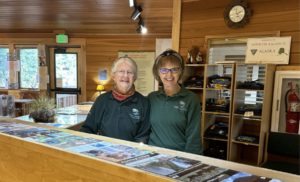 Fairbanks Friends member Gail Mayo (l) with refuge volunteer at the Arctic Interagency Visitor Center in Coldfoot.
Fairbanks Friends member Gail Mayo (l) with refuge volunteer at the Arctic Interagency Visitor Center in Coldfoot.
Volunteering: More than 50 Friends volunteered on eight different refuges. Selawik offered projects for the first time in memory – office and maintenance help and help with camps for village kids. Also, significant this year was the amount of help refuges were requesting with visitor centers. Friends went to Kodiak and Tetlin for month assignments as well as a few weeks for Arctic at the Interagency Visitor Center in Coldfoot. Public events required the most volunteers with Friends helping at the Kachemak Bay Shorebird Festival, Kenai Riverfest, Kenai Sportsman Show, Migratory Bird Days at Creamer’s Field, Seabird Fest in Seward, Bethel Ducks Unlimited Banquet, and Walks for the Wild at Kenai, Alaska Maritime and Anchorage. Numerous Friends volunteered at Kodiak, Kenai and Alaska Maritime refuges to staff visitor center desks and refuge special events. Izembek and Tetlin needed biological help with brant surveys and duck banding. With the exception of two volunteers that we had travel funding for, all other volunteers paid their own travel although refuges provided housing. For three projects we were unable to help because no one applied. Take a look at the project photos and stories on our volunteer activities page.
In 2024 we had less volunteer requests than we could have because Congress failed to pass a budget until late into the year causing refuges to avoid committing to projects. In addition, some refuges have lost so many staff that there is no one to plan or supervise a project. These conditions are likely to persist in 2025. To have any kind of a volunteer program, we need a volunteer coordinator to help develop opportunities and match members to jobs. See the article below. Interested? Write us at volunteer@alaskarefugefriends.org.
Funding: About $16,000 was approved by the Board to support refuge projects which includes half of our unrestricted funds plus some designated funds for specific refuges which come from bequests, donation boxes and other sources. Some projects are annual such as interns at Arctic Refuge’s Canning River Research Camp, school bus reimbursements for Kenai Refuge field trips, and support for the Migratory Bird Calendar. New this year was support to bring an Unangan artist to Homer for bentwood hat making workshops, support for a scoping meeting in Anchorage for the Alaska Maritime’s rat eradication proposal and for Koyukuk/Nowitna’s river management planning meeting, and a tablet for Innoko. We paid travel for the Friends volunteer to Izembek, a very expensive place to get to, and used some of our funds and a small grant from the Fish & Wildlife Retirees Association to pay the way of an environmental educator to Kotzebue for Selawik Refuge’s art and science camp. We contributed funds to a variety of refuge community events from Christmas bird count activities at Togiak, to the 20th Anniversaries of the Arctic Interagency Visitor Center and the Alaska Maritime Refuge’s Visitor Center and an art opening at Selawik Refuge. We received an additional Fish & Wildlife Service Retiree’s grant of $1600 which paid for seven urban youth to attend the Kachemak Bay Shorebird Festival. A $5000 grant from the Sam and Mary Lawrence Foundation partially paid for four Native student interns with the Kodiak Refuge and a student intern at Innoko. A $6000 designated gift from the Safari Club is purchasing steel shot to trade out with lead shot and has paid for shipping lead shot off the Yukon Delta Refuge. 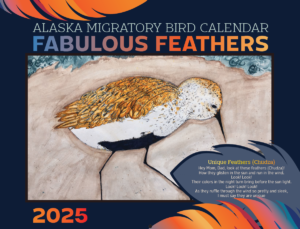
Friends has long supported the Migratory Bird Calendar contest with prizes for the many winners from refuge villages. This charming calendar featuring the drawings and writings of village children can be picked up from refuge offices throughout Alaska. If you are a member and not near a refuge office, contact us and we will send one.
Outreach and Education: This was a very successful year for our meetings with more attendees than ever. Archaeology in the Aleutians with 200 people had the highest attendance ever and a new watch party in Dutch Harbor that attracted 18. The three meetings this fall averaged 150 attendees between in person, watch parties and zoom. We learned about the Koyukuk/Nowitna/Innoko Refuge complex, the Fish and Wildlife’s new initiative to save salmon – “Gravel to Gravel”, winter recreation on the Kenai Refuge, float hunting on interior refuges, migratory bird work on all the refuges and the Porcupine caribou herd of the Arctic Refuge. Our programs are recorded and you can view those you missed here. Speaker watch parties resumed in Anchorage for the first time since the pandemic. We partnered for some meetings with Backcountry Hunters & Anglers for the Float hunting talk, Campbell Creek Science Center for Porcupine Caribou and REI for Flying Wild. We Friends were the only ones representing Alaska Refuges at the Migratory Bird Day Festival in Fairbanks. No refuge staff were available due to budget cuts. This is likely to get worse making our role in refuge outreach more critical. Tom Chard, Fairbanks Friends Board member, helping a child with a wildlife game.
We Friends were the only ones representing Alaska Refuges at the Migratory Bird Day Festival in Fairbanks. No refuge staff were available due to budget cuts. This is likely to get worse making our role in refuge outreach more critical. Tom Chard, Fairbanks Friends Board member, helping a child with a wildlife game.
Advocacy: This has been an extraordinarily challenging year for advocacy. Although we signed on with a number of other Alaska conservation groups to letters opposing bad Congressional legislation and continued to intervene in Alaska Industrial Development and Export Authority’s (AIDEA) lawsuit to reinstate their Arctic Refuge leases, we have lost some major battles to protect refuges. We commented on the Arctic Refuge’s Draft Supplemental Environmental Impact Statement (SEIS) on an oil and gas leasing program in the Refuge and signed on to extensive comments by the Arctic Coalition spearheaded by Trustees for Alaska. The No Action alternative was, unfortunately, not a legal alternative because the 2017 Tax Act requires this lease sale. We supported the alternative with the greatest, but still inadequate protective measures for the Refuge resources and the original purposes for which the Refuge was created. The final SEIS was issued on November 8 and selected this alternative. These protections will guide the second oil and gas lease sale scheduled for January 9.
As I write, the Draft Supplemental Environmental Impact Statement (SEIS) for Izembek Refuge is out for review with a preferred alternative selected by the Fish and Wildlife Service of trading away high-quality refuge wetlands and designated Wilderness to provide for a road through the heart of the refuge. This was a huge blow after the years we have been fighting this through lawsuits and letter writing. See the advocacy section for more on this and how to comment.
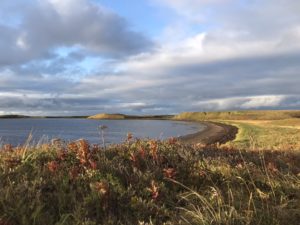 In November the Fish and Wildlife Service proposed a land exchange to accomodate a road through the wetlands and designated Wilderness of the Izembek National Wildlife Refuge. PC Cindy Mom, Seldovia Friends volunteer on Izembek Brant Project.
In November the Fish and Wildlife Service proposed a land exchange to accomodate a road through the wetlands and designated Wilderness of the Izembek National Wildlife Refuge. PC Cindy Mom, Seldovia Friends volunteer on Izembek Brant Project.
Friends leadership met with the FWS Alaska Regional Director in May to discuss our concerns about reduced staffing at refuges. Unfortunately, things got even worse as more budget cuts were applied. By the end of January there will be only seven refuge managers left for 16 refuges. Kodiak has lost three out of four of its outreach staff and the visitor center has closed for the winter for the first time in my memory. We have also recently heard that none of these positions will be filled in the foreseeable future. The last Trump administration instituted a six-month hiring freeze. The three refuges in Fairbanks have dropped all their public programs except fulfilling their obligation to partner with BLM and NPS on the Coldfoot Interagency Visitor Center during the summer. The 19-million-acre Yukon Delta Refuge lacks a pilot or a public use person. This is a thorny problem at the Washington and state level and I don’t see that we have made any progress advocating for budgets.
All this reminds us of the quote by noted author and conservationist Rachel Carson, “Conservation is a cause that has no end. There is no point at which we will say our work is finished.” Details and numerous other issues which caught our attention in 2024 are described in our Advocacy Reports here.
This was only our second Friends sponsored Discovery trip this time to the Yukon Delta National Wildlife Refuge. Eight Friends got to see for themselves how special this refuge is. Refuge staff spent a full day with us at headquarters in Bethel outlining their programs and challenges and exploring ideas for Friends help. Our first trip was in 2023 to the Arctic Refuge.
Thank you all for your support that allowed us to accomplish these things. Sixteen refuges and 75 million acres requires all of us pulling together to give refuges the help they need. It is hard to be hopeful looking at 2025 and the change in administration. We need to up our game.


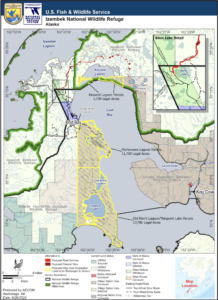
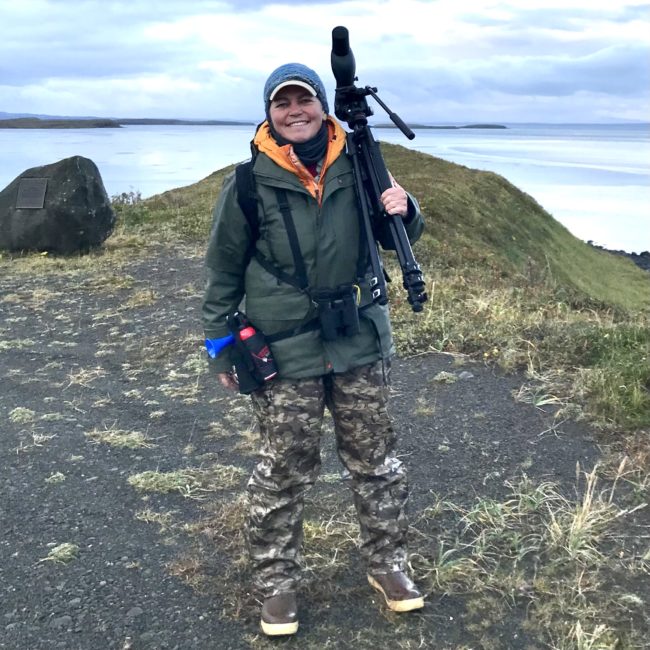

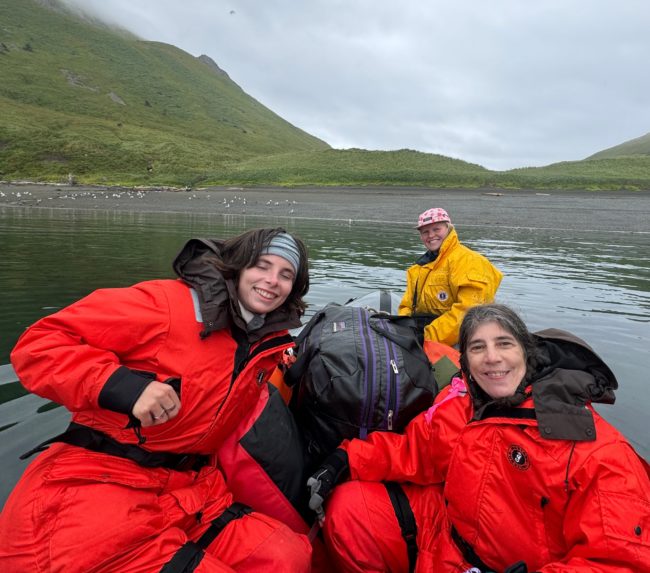
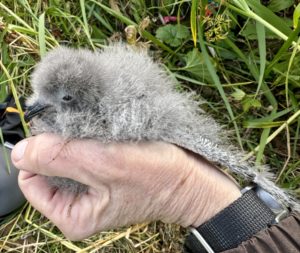

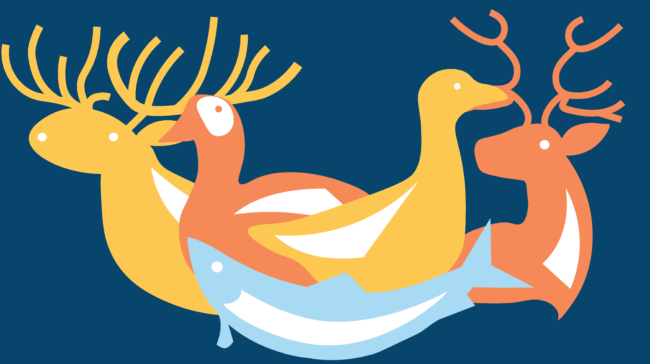

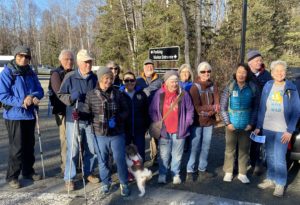 But Anchorage was glorious. Meg Parsons (far right) led the Walk held at the Campbell Creek Science Center which preceded our Octobermembership meeting. PC Poppy Benson
But Anchorage was glorious. Meg Parsons (far right) led the Walk held at the Campbell Creek Science Center which preceded our Octobermembership meeting. PC Poppy Benson 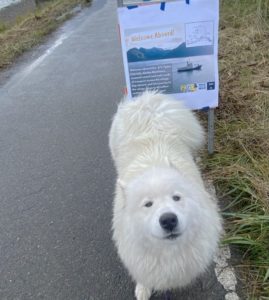

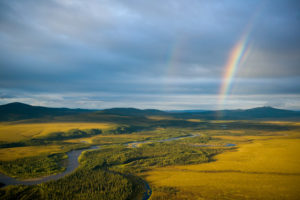
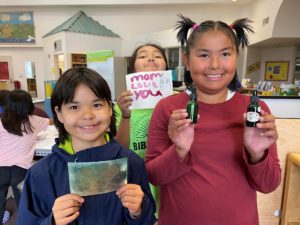
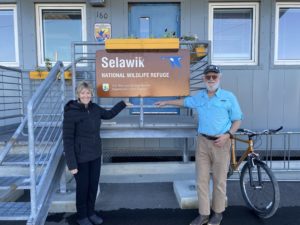
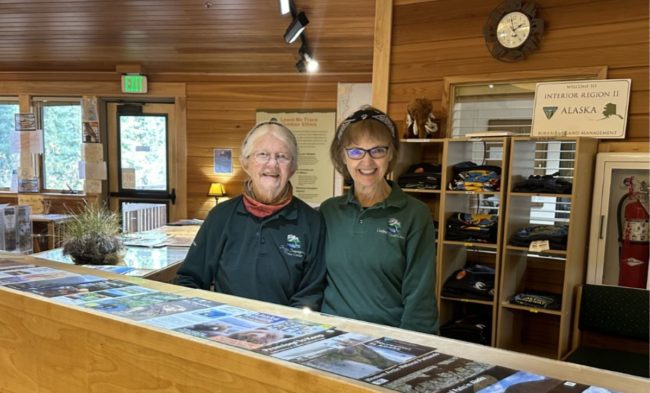

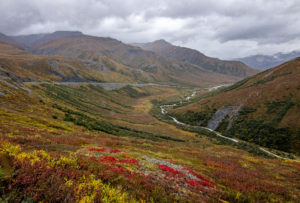 Fall colors on the Dalton Highway. PC Randy Lewis
Fall colors on the Dalton Highway. PC Randy Lewis
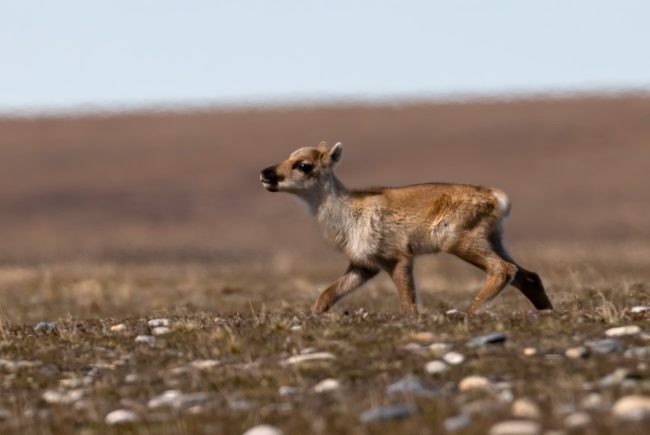
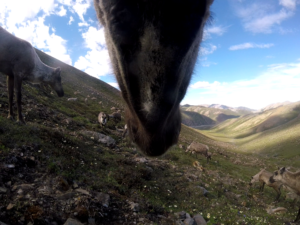 The Porcupine caribou herd is currently the largest in Alaska and one of the largest herds in North America. Each summer, it undergoes one of the longest terrestrial migrations on Earth to birth calves on the coastal plain of the Arctic National Wildlife Refuge. But what is the future of the herd given changing climate conditions? Join us to hear about how an innovative research project aims to discover whether and how a changing climate will impact the herd. Arctic Refuge Supervisory Biologist Paul Leonard will share with us the significance of the Porcupine caribou herd as a cornerstone of the ecological, cultural, and economic landscape of the Arctic Refuge, and as a vital part of the livelihoods and traditions of Indigenous peoples of the region, including the Iñupiat and Gwich’in. Lead researcher Heather Johnson of US Geological Survey (USGS) will discuss the research she is conducting on the Porcupine caribou herd in collaboration with partners including the refuge. Their research aims to understand the influence of changing climate conditions on summer habitat for caribou in the Arctic, the impacts of these changes on caribou behavior and population dynamics, and the implications for the future of the Porcupine herd. As part of the project, caribou wear video camera collars so researchers can ‘see’ life from a caribou’s perspective, footage we look forward to sharing with you!
The Porcupine caribou herd is currently the largest in Alaska and one of the largest herds in North America. Each summer, it undergoes one of the longest terrestrial migrations on Earth to birth calves on the coastal plain of the Arctic National Wildlife Refuge. But what is the future of the herd given changing climate conditions? Join us to hear about how an innovative research project aims to discover whether and how a changing climate will impact the herd. Arctic Refuge Supervisory Biologist Paul Leonard will share with us the significance of the Porcupine caribou herd as a cornerstone of the ecological, cultural, and economic landscape of the Arctic Refuge, and as a vital part of the livelihoods and traditions of Indigenous peoples of the region, including the Iñupiat and Gwich’in. Lead researcher Heather Johnson of US Geological Survey (USGS) will discuss the research she is conducting on the Porcupine caribou herd in collaboration with partners including the refuge. Their research aims to understand the influence of changing climate conditions on summer habitat for caribou in the Arctic, the impacts of these changes on caribou behavior and population dynamics, and the implications for the future of the Porcupine herd. As part of the project, caribou wear video camera collars so researchers can ‘see’ life from a caribou’s perspective, footage we look forward to sharing with you!
